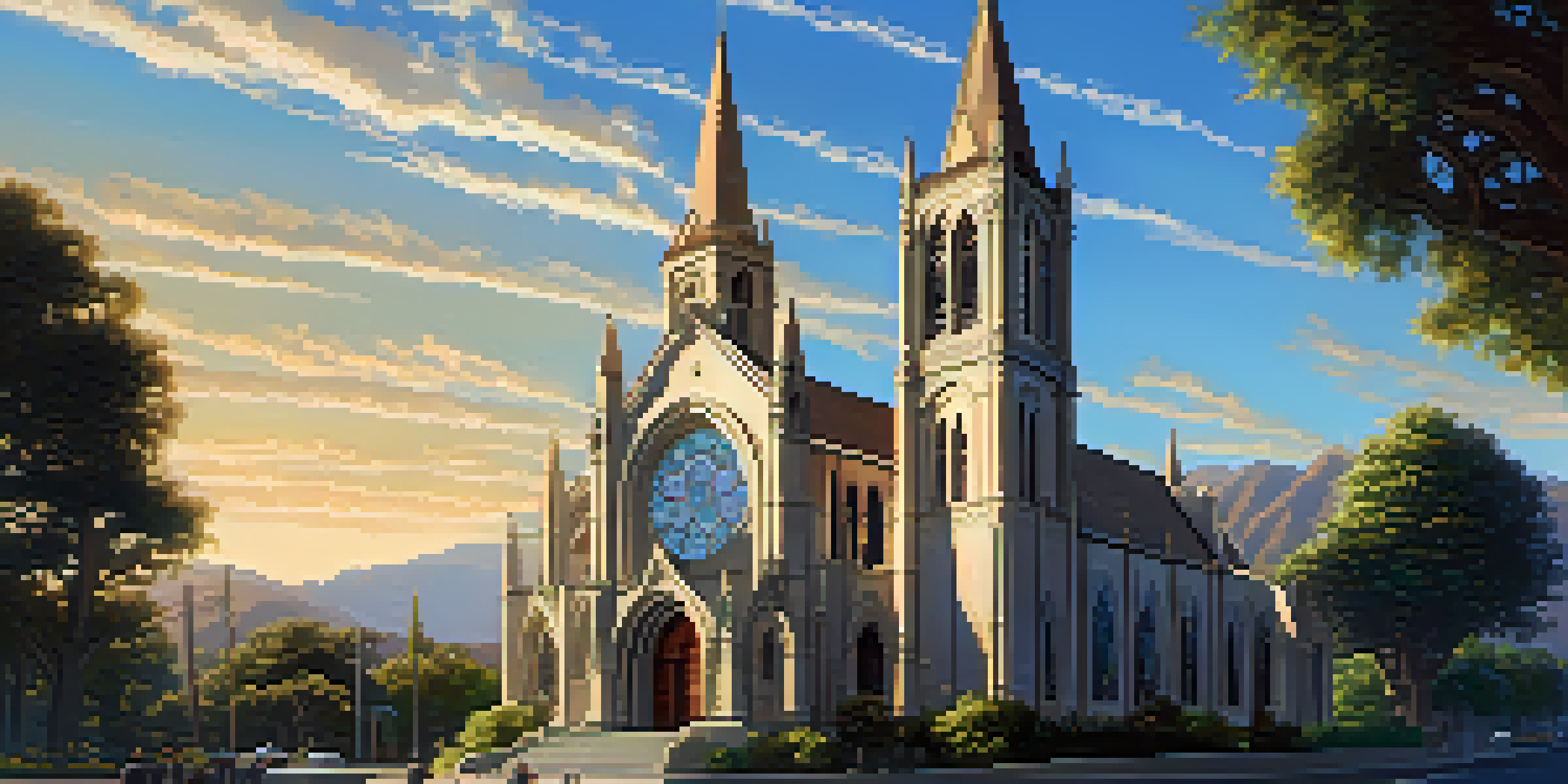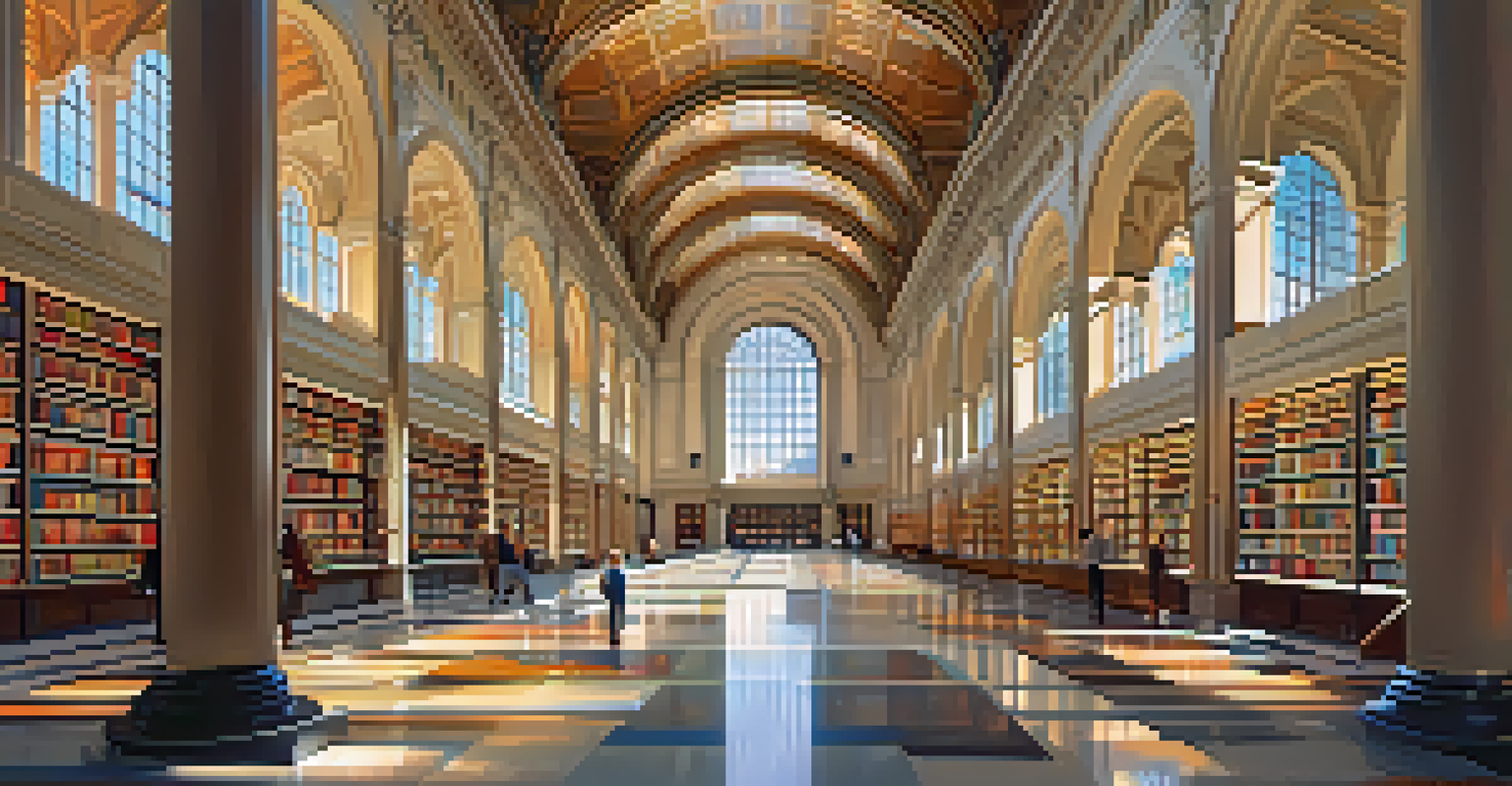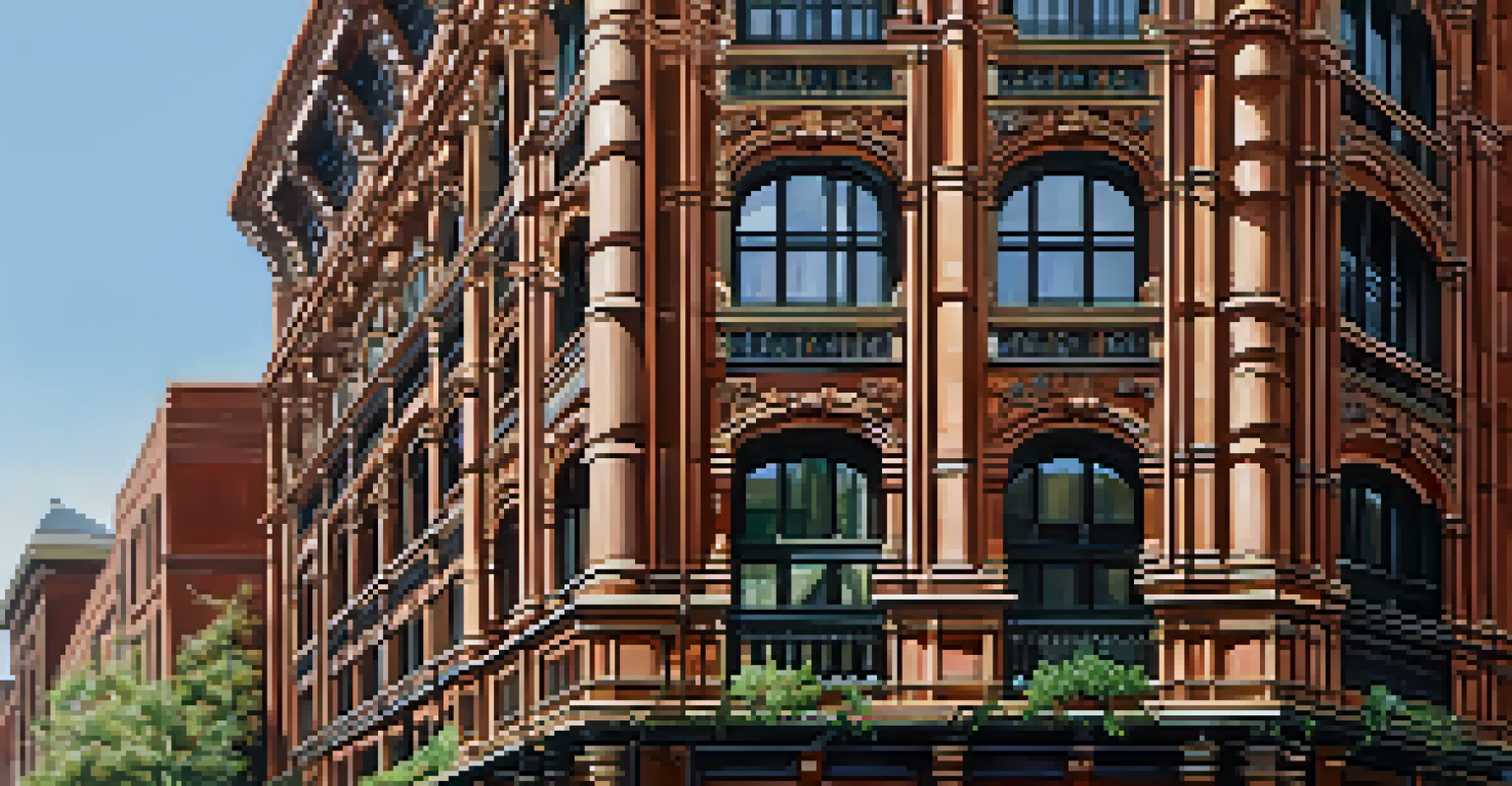Gothic Revival Structures in Los Angeles: A Closer Look

Understanding the Gothic Revival Movement in Architecture
The Gothic Revival movement, which gained popularity in the 19th century, sought to revive the architectural styles of medieval Europe. This movement was characterized by intricate details, pointed arches, and a focus on verticality, creating structures that seem to reach for the heavens. In Los Angeles, this eclectic style found its way into both public and private buildings, reflecting a unique blend of historical inspiration and local creativity.
Architecture is the art of how to waste space.
Los Angeles, often associated with modern architecture, also boasts a rich tapestry of Gothic Revival structures that showcase the city’s diverse architectural heritage. The movement aligned with a broader cultural fascination with medievalism during the Victorian era, allowing architects to experiment with form and detail in exciting new ways. Think of it as a romantic nostalgia for a time when craftsmanship was paramount, giving rise to buildings that are as beautiful as they are functional.
As we delve into the Gothic Revival structures in LA, we’ll explore how these buildings not only serve their practical purposes but also tell stories of a bygone era. Each edifice stands as a testament to the artistic ambitions of its creators, blending historical reverence with the innovative spirit of the time. This exploration uncovers the layers of history embedded in the architecture that surrounds us.
Key Characteristics of Gothic Revival Architecture
Gothic Revival architecture is easily recognizable thanks to its hallmark features, such as pointed arches, ribbed vaults, and flying buttresses. These elements not only add visual interest but also serve structural purposes, allowing for larger windows and more open interior spaces. Imagine a cathedral, with its towering spires and delicate stonework, standing as a symbol of both faith and artistry.

In Los Angeles, the use of intricate detailing is particularly notable. From ornate carvings to decorative tracery, these elements infuse buildings with a sense of grandeur and elegance. It’s like walking through a gallery of stone, where each façade tells a story and invites you to appreciate the craftsmanship that went into its creation.
Gothic Revival: A Historical Revival
The Gothic Revival movement in the 19th century aimed to resurrect the intricate architectural styles of medieval Europe, blending historical inspiration with local creativity in Los Angeles.
Moreover, the color palettes often reflect the natural hues of the surrounding landscape, using materials like brick and stone to harmonize with the environment. This connection to nature adds another layer of beauty to Gothic Revival structures, making them not just buildings but integral parts of the urban fabric. As we explore specific examples, these characteristics will come to life in the context of Los Angeles.
Notable Gothic Revival Structures in Los Angeles
One of the most prominent Gothic Revival buildings in Los Angeles is the famous St. Vincent de Paul Church, which showcases stunning stained glass and a striking façade. This church, completed in 1925, is a perfect example of how the style can evoke a sense of spirituality and community. As you step inside, the play of light through the stained glass creates an atmosphere that feels both sacred and inviting.
The details are not the details. They make the design.
Another remarkable structure is the Los Angeles Public Library, designed by architect Bertram Goodhue and completed in 1926. This building features a blend of Gothic and other styles, but its towering main entrance with intricate carvings and a distinctive dome evokes the essence of Gothic Revival architecture. The library stands not only as a center for knowledge but also as a work of art that draws visitors in with its historical charm.
Additionally, the Bradbury Building, while primarily known for its Victorian and Romanesque influences, incorporates Gothic elements that contribute to its unique aesthetic. The interplay of light and space within this building’s atrium, along with its wrought iron details, make it a fascinating example of how the Gothic Revival style can adapt to different architectural contexts in Los Angeles.
The Influence of Gothic Revival on Modern Architecture
The influence of the Gothic Revival movement can still be felt in contemporary architecture, especially in how it emphasizes verticality and intricate detailing. Many modern designers draw inspiration from these historical styles, incorporating elements like pointed arches and decorative motifs into their projects. This creates a dialogue between the past and the present, allowing new buildings to resonate with the rich history of architecture.
In Los Angeles, some architects are now blending Gothic Revival features with modern materials and techniques, resulting in innovative structures that pay homage to the past while looking toward the future. Think of it as a creative remix, where classic designs are reinterpreted in fresh and exciting ways. This trend demonstrates that the principles of Gothic Revival are not just relics of history but can be adapted to suit today’s architectural needs.
Key Features of Gothic Revival
Notable characteristics of Gothic Revival architecture include pointed arches, ribbed vaults, and intricate detailing, which together create visually striking and structurally innovative buildings.
Moreover, this blending of styles often aims to evoke a sense of nostalgia and connection to the local heritage, making contemporary buildings feel more rooted in their communities. As we consider the ongoing impact of Gothic Revival architecture, it’s clear that these timeless elements continue to inspire and shape the skyline of Los Angeles.
Preserving Gothic Revival Architecture in LA
As with many historical architectural styles, preserving Gothic Revival structures in Los Angeles presents both challenges and opportunities. Many of these buildings are aging, and maintaining their intricate details can be costly and labor-intensive. However, the value they bring to the community—and their role as cultural landmarks—make preservation efforts crucial for future generations.
Local preservation groups and historical societies are often at the forefront of these efforts, advocating for the protection and restoration of Gothic Revival buildings. Their work helps raise awareness about the importance of these structures, ensuring that the stories they tell are not lost to time. It’s a community effort, much like a team restoring a vintage car—each detail matters and contributes to the overall beauty.
Moreover, as awareness grows, so does interest in adaptive reuse, where these buildings are repurposed for modern needs while retaining their historical significance. This approach not only protects architectural heritage but also breathes new life into old spaces, turning them into vibrant hubs for art, culture, and community engagement. The journey of preservation is a testament to the enduring legacy of Gothic Revival architecture in Los Angeles.
Gothic Revival Architecture and Cultural Identity
Gothic Revival architecture in Los Angeles is not just about aesthetics; it also reflects the cultural identity of the city. As waves of immigrants and artists settled in LA, they brought with them diverse influences that shaped the architectural landscape. This melting pot of cultures contributed to the unique expressions found in the city’s Gothic Revival structures, making them a symbol of inclusivity and creativity.
These buildings often serve as gathering places, fostering community relationships and shared experiences. For example, churches and libraries are not just venues for services or resources; they are spaces where people come together, forging connections that transcend cultural boundaries. This aspect of Gothic Revival architecture reinforces its role as a community anchor, rooted in the values of collaboration and support.
Cultural Significance and Preservation
Gothic Revival structures in Los Angeles reflect the city's diverse cultural identity and community values, making their preservation vital for future generations.
Additionally, the stories behind these structures often highlight the contributions of various cultural groups to Los Angeles’ rich history. As we explore the Gothic Revival buildings, we uncover narratives that celebrate diversity and resilience, reminding us that architecture is a reflection of the society that creates it. It’s a beautiful interplay of history, culture, and artistry that continues to evolve.
Visiting Gothic Revival Sites in Los Angeles
If you’re intrigued by Gothic Revival architecture, Los Angeles offers a treasure trove of sites to explore. From the ornate details of St. Vincent de Paul Church to the grand interiors of the Los Angeles Public Library, each visit provides a deeper appreciation for the craftsmanship and history behind these structures. It’s like embarking on an architectural scavenger hunt, where every stop reveals something new and captivating.
Many of these buildings are accessible to the public, allowing visitors to immerse themselves in their beauty and significance. Guided tours often highlight the fascinating stories behind the architecture, making the experience even more enriching. Imagine walking through a space where history comes alive, with guides sharing anecdotes that connect you to the past.

Whether you’re a local or just passing through, taking the time to visit Gothic Revival sites in LA is an opportunity to engage with the city’s architectural heritage. Each building tells a story, inviting you to reflect on the artistry and cultural influences that shaped them. So grab your camera and get ready to explore—there’s a world of history waiting just outside your door.